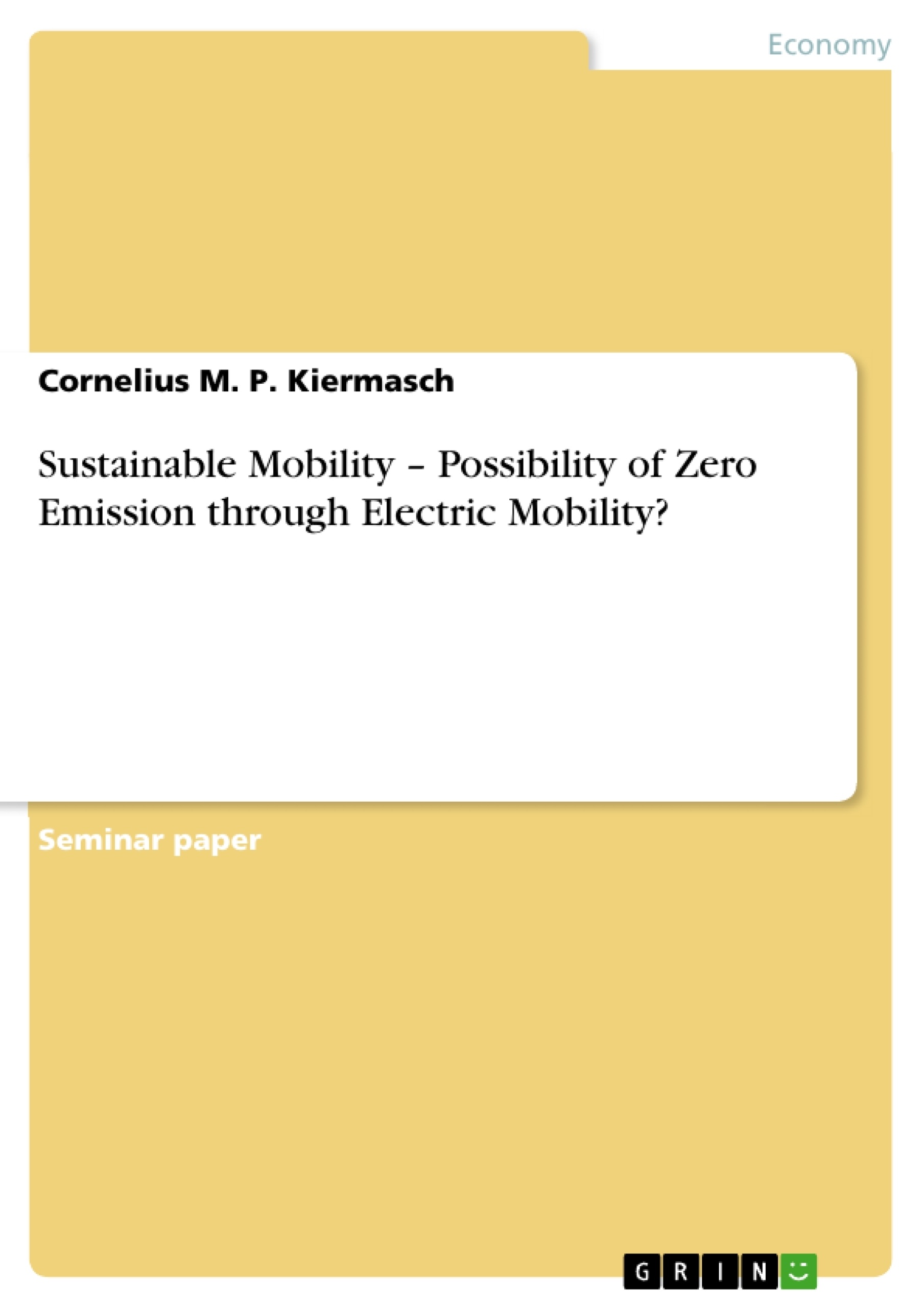Climate change and the negative impact that various human activities can have on our ecosystem are among the inescapable challenges world leaders are facing. While the issue of global warming remains highly debated, there is increasing evidence to support the environmental impact of carbon emissions. It is estimated that the transport sector is responsible for roughly 18% of carbon emissions in Germany.
In future, greenhouse gas emissions will have to be reduced in the transport sector and due to the globally growing demand for energy in emerging markets and the risk of shortages prices of fossil fuel are bound to rise considerably. Accordingly mobility re-quires a sustainable development path towards zero-carbon emissions.
In consequence, the importance of alternative drive technologies is growing. Battery electric vehicles (BEV) are seen as one possible solution since they release no carbon emissions while running on electric power and are obviously low-noise. However, some question whether BEVs are truly “clean vehicles” because in some cases, the electricity used to power the vehicles is produced by high polluting coal power plants and a lot of energy is required to produce the batteries. In addition past development of battery-electric vehicles showed that the technology was not yet sufficiently mature due to low ranges and high prices to meet the requests of potential users. Thus, several require-ments need to be met to achieve a market acceptance which is sufficiently big to be considered a critical mass providing the way to sustainable mobility.
According to the open questions above which are associated with an alternative drive technology, this paper first gives an understanding of sustainable mobility and shows respectively goals (Chapter 2). Chapter 3 provides an overview of greenhouse gas emissions due to transport sector in Germany and consumer’s mobility characteristics and behaviour in order to analyse in Chapter 4 whether zero emission would be possible by BEVs. For this analysis three areas are focused: economically, ecologically and operating characteristics.
Inhaltsverzeichnis (Table of Contents)
- Introduction
- Sustainable Mobility
- Basics of Mobility in Germany
- Transport and Greenhouse Gas Emissions
- Consumer's characteristics and behaviour
- Zero Emission Technology
- Well-to-wheel analysis
- Battery Electric Vehicle Analysis
- Ecologically
- Operating characteristics
- Economically
- Conclusion
- Appendix
- References
Zielsetzung und Themenschwerpunkte (Objectives and Key Themes)
This paper aims to provide an understanding of sustainable mobility and analyze the feasibility of achieving zero emissions through battery electric vehicles (BEVs). The paper explores the challenges of achieving sustainable mobility and examines the potential of BEVs as a solution to reduce greenhouse gas emissions from the transport sector.
- Sustainable mobility: The need for a balance between mobility and environmental impact.
- Greenhouse gas emissions from the transport sector: Analyzing the impact of transport on climate change.
- Battery electric vehicles: Assessing the ecological, economic, and operational characteristics of BEVs.
- The role of consumer behavior in sustainable mobility: Examining how consumer choices influence the adoption of sustainable transport technologies.
- The potential for zero emissions through electric mobility: Evaluating the feasibility of achieving zero-carbon emissions in the transport sector.
Zusammenfassung der Kapitel (Chapter Summaries)
The introduction highlights the urgency of addressing climate change and the significant role of the transport sector in greenhouse gas emissions. It introduces the concept of sustainable mobility and the potential of battery electric vehicles (BEVs) as a solution to achieve zero-carbon emissions.
Chapter 2 delves deeper into the concept of sustainable mobility, emphasizing the need for a balanced approach that prioritizes environmental sustainability while ensuring access to transportation services. The chapter presents a comprehensive framework for achieving sustainable mobility by outlining the goals established by the World Business Council for Sustainable Development (WBCSD).
Chapter 3 focuses on the specific context of Germany, providing an overview of greenhouse gas emissions from the transport sector and examining consumer characteristics and behaviors related to mobility. This analysis lays the foundation for evaluating the feasibility of BEVs as a viable solution in the German context.
Chapter 4 explores the concept of zero-emission technology, focusing on well-to-wheel analysis and a detailed examination of battery electric vehicles. This analysis encompasses ecological, economic, and operational characteristics of BEVs to understand their strengths and limitations.
The paper concludes with a discussion of the overall potential of battery electric vehicles as a means to achieve sustainable mobility. The author provides insights into the future outlook for BEVs and outlines the challenges and opportunities associated with their widespread adoption.
Schlüsselwörter (Keywords)
Sustainable mobility, greenhouse gas emissions, transport sector, battery electric vehicles, consumer behavior, zero-emission technology, well-to-wheel analysis, ecological impact, economic viability, operational characteristics, market acceptance.
- Quote paper
- Diplom-Betriebswirt (BA) Cornelius M. P. Kiermasch (Author), 2010, Sustainable Mobility – Possibility of Zero Emission through Electric Mobility?, Munich, GRIN Verlag, https://www.grin.com/document/152732



